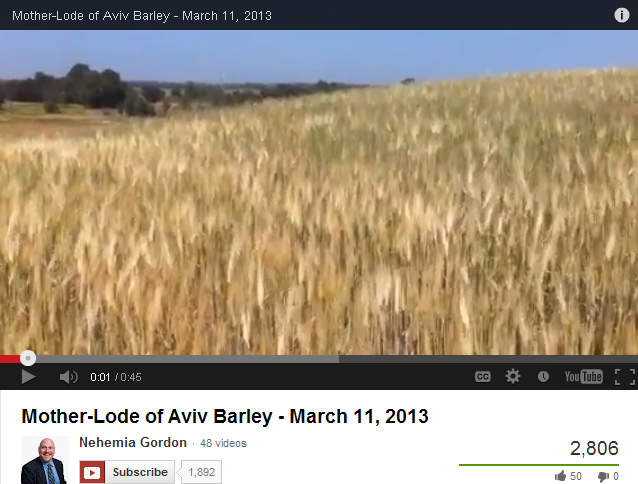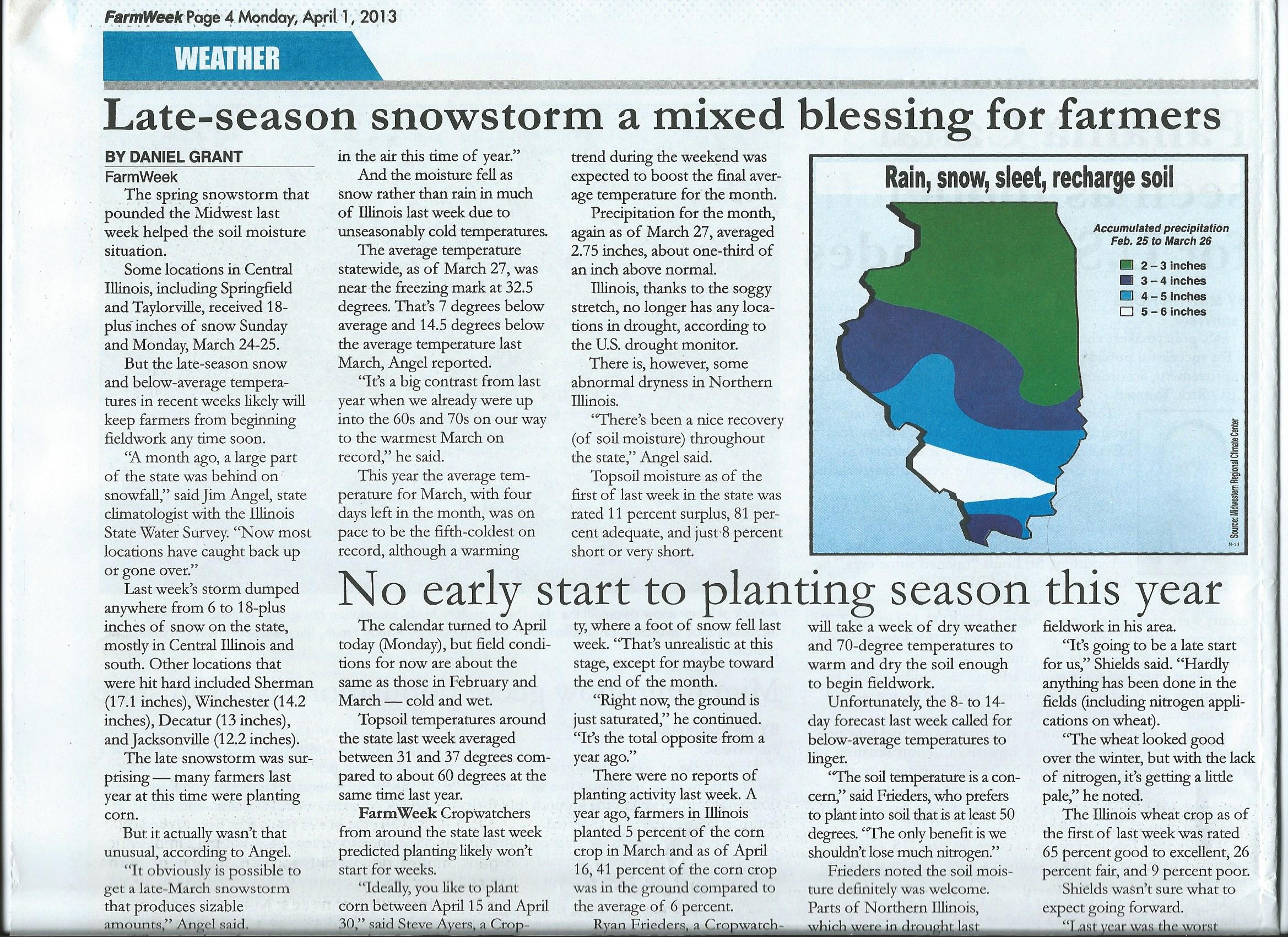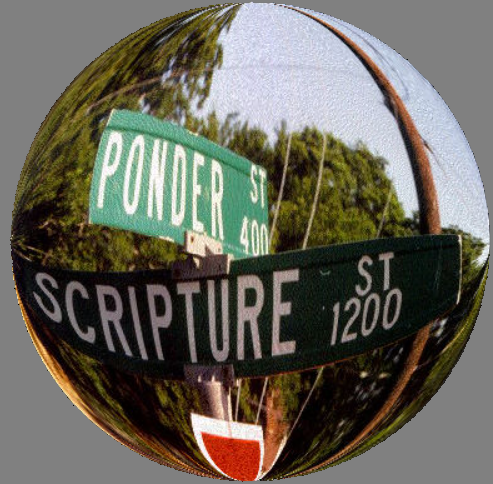|
|
-
Ponder Scripture Newsletter
-
-

-
ith
the seemingly
endless array of Bible-based articles, newsletters and other
publications currently available on the Internet, there is a
veritable "information overload" of sorts when it comes to searching
for various Bible-related topics. Since there is already an
abundance of Bible-related topics to choose from, you can well
imagine that one could devote his or her full time to reading these
studies. June and I have added our share of studies to
cyberspace, some of which are very lengthy. Indeed, some
topics require lengthy explanations to provide in-depth answers.
On this page, however, we want to keep things as "short and sweet"
as possible. While we primarily gear our writings to those who
share our understanding that the Torah is relevant for believers
today, anyone is welcome to read and offer feedback; however, due to
our schedules, we cannot guarantee a quick turn-around response
time. We invite you to direct all correspondence to seekutruth
at aol dot com.
Archived Newsletters
Newsletter #10: Update on the
2013 Calendar Feud
By Larry Acheson
04/07/2013
ast month at this time we were on the receiving end
of several e-mails explaining why the only workable Scriptural calendar
is one that is based on first observing the green ears of barley in
Israel, then sighting the subsequent new moon. June and I have been
reckoning the Scriptural calendar from the new moon that is sighted on
or after the vernal equinox since 1999, so we’ve been exposed to all the
arguments, and since we went by the green ears of barley reports prior
to using our current method, we pretty much know all the pros and cons
of both arguments by now. In last month’s newsletter, we addressed how
untrustworthy the current green ears of barley reports from Israel are
and we continue to harbor that same sentiment this month! First, we
continue to maintain that anyone truly familiar with farming techniques
understands that there is no way the barley crop deemed “harvest ready”
by Karaite Jew Nehemiah Gordon on the day before his 2010 Passover
observance could have been truly ready for harvest. In our Balancing
the Calendar II study, we display photos taken from the video posted
by Nehemia Gordon and based upon that one report, those who understand
basic farming know that Nehemiah Gordon’s declarations of the new
Scriptural year should be taken with a “grain of salt.”
In 2013, it is difficult to ascertain whether
things are any different than they were in 2010. Mr. Gordon uploaded
two “green ears of barley” videos on March 11th, one of which
came from a field that we would consider as being highly unlikely to
produce ripe grain in time for his Passover observance. The other field
may well have been harvest-ready in time of Mr. Gordon’s Passover
observance; however, unlike in 2010, Nehemia Gordon didn’t upload any
videos showing the condition of the crop on the day before Passover. As
a reminder, in ancient Israel, the barley had to be ripe in time for the
Wave Sheaf offering that took place during the Feast of Unleavened
Bread. We are left to presume that both fields from Mr. Gordon’s
videos were ripe in time. Here’s a screen shot of the one field that’s
looking pretty green and tender (on the left) and the other field that’s
looking fairly advanced (on the right):


Here in Texas, things just seem to be maturing
later than they were at this same time a year ago. For example, we are
accustomed to enjoying the beautiful Red Bud trees put forth their
vibrant pink flowers in late February/early March. It wasn’t until
towards the end of March that the flowers emerged this year. I rather
imagine that if the season is running a little behind here in Texas this
year, things aren’t that much different over in Israel. I’m not saying
they are or they aren’t, but I hope you can at least understand my
reasoning, especially in view of how trustworthy the barley reports from
Israel are.
Some
of you may know that June and I are originally from Illinois, where I
was raised on a farm operated by my father. My brother still farms and
I receive weekly reports from the Illinois Farm Bureau that strongly
validate the fact that the seasons are running behind this year. For
the week of March 25th, shortly before the green ears of
barley folks were observing their Passover, the headlines read, “Spring
begins with winter-like conditions.” The article contrasted last year’s
80° temperatures on the first day of spring with this year’s
temperatures that were in the teens with bitterly cold wind chill
factors. The following week, the paper featured an article titled,
“Late-season snowstorm a mixed blessing for farmers.”


Most of the calendar issue
e-mail exchanges that we were privy to over the past couple of months
have fizzled out by now. However, there is one that has lingered. The
instigator of the discussion is a man who claims that the true calendar
consists of years that begin during the month of the vernal equinox. Of
course, barley isn’t important to him with this method of reckoning
because otherwise he would concede that in 2010, the barley was not yet
ripe in time for those who observed Passover during the month of the
vernal equinox. Yes, the vernal equinox just happened to occur during
the same month that Karaite Jews were observing Passover. This believer
understands that Scripture is just not crystal clear on when to begin a
new year, so he wisely turns to historical evidence and one of the best
sources for how Judaism reckoned the calendar is first-century Jew
Philo, who wrote the following in "Questions and Answers on Exodus":
(Scripture) thinks it proper
to reckon the cycle of months from the vernal equinox. Moreover,
(this month) is said to be the ‘first’ and the ‘beginning’ by synonymy,
since these (terms) are explained by each other, for it is said to be
the first both in order and in power; similarly that time which proceeds
from the vernal equinox also appears (as) the beginning both in order
and in power, in the same way as the head (is the beginning) of a living
creature. And thus those who are learned in astronomy have given this
name to the before-mentioned time. For they call the Ram the head of
the zodiac since in it the sun appears to produce the vernal equinox.1
When Philo wrote,
"Scripture thinks it proper to reckon the cycle of months from the
vernal equinox," I believe he meant, "Scripture thinks it proper to
reckon the cycle of months from the time of the vernal equinox," as in
(A) first the vernal equinox occurs, serving as the catalyst for the
sequence of reckoning the new year and (B) then the ensuing new moon
marks the first month of the year. For example, if you keep the feast
of Tabernacles from the 15th of Tishri through the 22nd of that same
month, you do not begin the observance before the 15th; you begin to
observe the feast on the 15th. We are thus persuaded that Philo's use
of "from the ..." tells us that he regarded the vernal equinox as the
catalyst initiating the process used in reckoning which month is the
first month of the year. Nevertheless, the believer we referred to up
above believes that Philo regarded the month of the vernal equinox to be
the first month of the Scriptural year.
We are certainly at odds with those who teach that we should look for
the green ears of barley in Israel, primarily because their reports are
not trustworthy. We are somewhat at odds with those who strictly go by
the vernal equinox because, unlike them, we agree that there needs to be
ripe barley in time for the Feast of Unleavened Bread. I remember that
before we made the switch from going by the green ears of barley reports
to going by the vernal equinox, a man told us that if we go by the
vernal equinox, there will always be ripe barley in time for the feast.
Thus far, for fourteen years, we have found his statement to be true.
We are currently
on track for Passover falling on April 25, 2013, followed by the Feast
of Unleavened Bread from April 26 - May 2nd. Regardless of when you
observe this feast, may it be a blessed one for you and your family.
__________________________________
1
From Philo, Supplement II, “Questions and Answers on
Exodus,” translated by Ralph Marcus, Ph.D., Harvard University Press,
Cambridge, MA:, 1953, pp. 2-3.
Back to Ponder Scripture Newsletter
Archives

|
|
|

This is the
name of our Creator, Yahweh, sometimes called the Tetragrammaton. It
is given here in (A) the Phoenician script, (B) the Ivrit Kadum
(Paleo-Hebrew) script, and (C) the Modern Hebrew script (a stylization of
Aramaic).
Note:
All books/articles in PDF format require Adobe Acrobat Reader to view them.
To obtain your free copy of Adobe Acrobat Reader, just click on the icon
below.

|
|


















